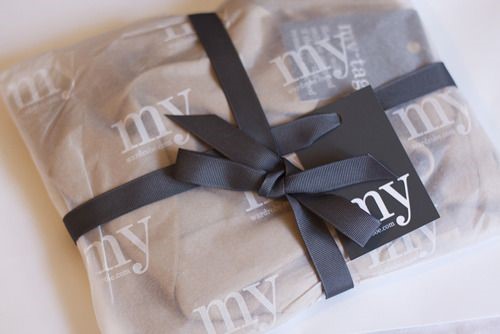It’s a fact: When it comes to products, consumers make instant judgments based on first appearances. For that very reason, there’s a lot more to packaging design than meets the eye.
Behind the veneer is a raft of behavioral science – so, when choosing a supplier, it’s critical to appoint a partner with the skillset to fashion design that delivers.

1. A new chapter in consumer behavior
Today’s consumer landscape presents a number of big challenges for packaging design suppliers. Every year, we see design trends come and go: from geometric patterns, color blocking, and retro themes to designs inspired by fine art, detailed technical drawings, or cuddly brand characters. But there are much bigger issues at play – social movements that, over the next few years, will have an unprecedented impact on the effectiveness of packaging design.
Suppliers must demonstrate a deep understanding of growing market influences, reading between the lines to translate attitudinal changes into buying psychology. Clients need to probe beneath the surface, going beyond past credentials to test their agency’s grasp on the drivers that are re-shaping consumer purchasing criteria. Choosing the wrong agency partner is a risk that could result in customer alienation and lost market share, a situation that cannot be remedied easily in today’s crowded and fast-moving marketplace.

2. How to influence – the inside track
Consumer research has always been the backbone of packaging development, ensuring that design cuts through the clutter, reinforces brand attributes, and fulfills functional needs. To date, research methods have tapped into both conscious and subconscious decision-making, using techniques such as monadic and paired comparison tests, eye tracking, life-size shelf tests, and virtual retail environments.
However, rather than unlocking consumer truths, gauging consumer behavior via traditional means can be misleading. In contrast, brain waves never lie, so cognitive neuroscience – supported by advancements in functional magnetic resource imaging technology – is fast becoming the mainstay of packaging research. By monitoring areas of the brain such as the orbitofrontal cortex and limbic system, it’s possible to determine the triggers of emotion, memory, and action in relation to design.
In today’s noisy commercial environment, consumers’ neural systems can suffer from overload. This can prompt an emotional response to pre-held information rather than a cognitive response, so an important aspect of the design is to stimulate somatic markers buried in the subconscious memory. Suppliers must embrace this new era of neuro design and be as comfortable wearing white coats as button-down shirts and chinos.

3. E-commerce is tearing up the rulebook
Wholesale change in packaging is not limited to desk research. The steady rise of online shopping has been accelerated by the Covid pandemic. According to retail insights from Edge by Ascential, the UK’s eCommerce market was set to reach almost £80 billion in 2021, a 19% rise from the previous year, and the trend is set to continue.
The challenge for packaging design is to extend and enhance the brand experience in a context that’s a far cry from brick-and-mortar shopping. It’s really a 2-stage process, initially selecting the product online and then unpacking it at home, the first time that the consumer has physical contact with the product. The implications for design are that it needs to appeal in the absence of physicality while ensuring that the consumer is not underwhelmed upon receipt.
A recent survey commissioned by WePack revealed the importance of texture in packaging for men, whereas for women, it was not an issue at all. In fact, one in eight men surveyed said that texture caught their attention the most. If online brands are to maximize sales to a male audience, they need to find a way to communicate texture via the screen. Tackling the nuances of omnichannel shopping should be a key part of the agency brief.

4. From superficial to fully immersive
First impressions count a lot in packaging, and, in terms of sensory impact, the bar has been raised by an explosion in digital technology. 3D billboards are breaking the mold, such as Marmite’s latest stunt featuring the giant lid of a Marmite Dynamite jar exploding out of a 48-sheet poster and into a nearby car windscreen.
E-commerce sellers need to take an integrated approach, using 3D imagery to extend the brand experience from packaging through to POS merchandising displays and advertising. The brand story doesn’t start or end with packaging, it’s an immersive experience that can be extended via QR or AR codes, with consumers using their mobile device as a personal lens to enter a new dimension, the interactive world of virtual, augmented, and mixed reality.
With QR/AR coding, the opportunities are legion, leveraging the finite space on a pack to enhance the brand and build loyalty. It can be anything from sharing recipes for a food product to introducing celebrity endorsements for a fashion item. It can involve consumers in gaming, using entertainment to engage, reinforce brand values, and gather valuable data. Picking up on the public’s keen interest in corporate purpose beyond profit, consumers can be taken on a journey to breathe life into environmental or ethical claims: They could step inside a virtual factory to witness ‘green’ manufacturing; follow the full lifecycle of a product to authenticate its sustainability credentials; or travel down the supply chain to meet smallholder farming communities using modern agronomy to grow Arabica coffee beans in Uganda.

Today, more than ever before, the marketing industry is responding to significant social and technological changes that are revolutionizing the tricks of the trade. At the end of the day, clients demand a strong return from their investment in marketing, and packaging design is pivotal to success. Rather than acting on impulse, it pays for clients to do their due diligence when seeking a design partner that is up to the job in today’s brave new world.







